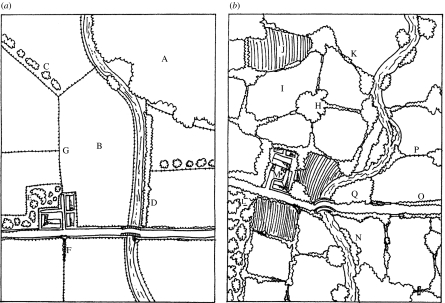Figure 1.
Contrast between (a) a simple (or homogeneous) and (b) a complex (or heterogeneous) farm landscape. Note the heterogeneity of habitats and the connectance features in the complex landscape compared with the uniformity of the simple farm landscape. A, indigenous plant reserve: these tend to be large tracts of land not integrated with farmland; B, pasture and exotic grasses; C, typical shelter belt (e.g. popular, Cupressus macrocarpa and Pinus radiata); D, riparian vegetation (e.g. willow, grasses and some indigenous species); E, farmhouse garden; F, small areas of patchy gorse, Ulex europaeus; G, wire fences: common field boundaries; H, small wood lot: a highly used but sustained feature; I, pasture; J, ploughed field; K, hedge fence; L, orchard; M, farmhouse garden; N, riparian vegetation; O, roadside vegetation, hedges, trees, etc; P, wire fences or stone walls; and Q, woodland. Modified from Keesing & Wratten (1997).

